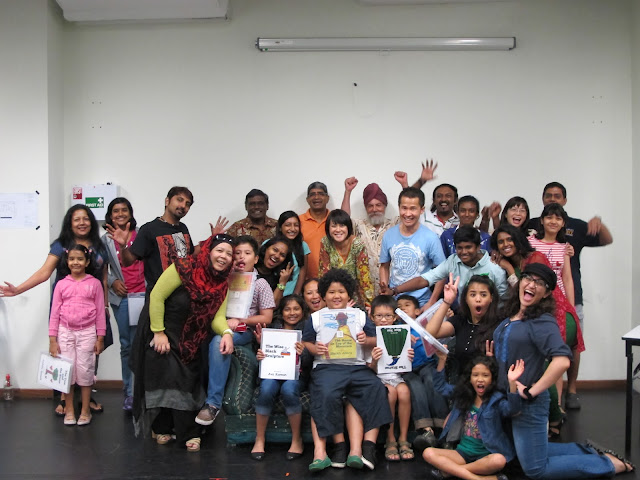Almost Stabbed by Boy with a Plastic Fork!
 |
| Family audience. (Photo courtesy of ACT 3 Theatrics.) |
The Magic of Children’s
Theatre is that the audience, without a moment’s hesitation, enters into
the world we are creating. They become one with the characters. The characters’
joy, pain, anxiety, fear become theirs.
This is why it is
vital for makers and actors in Children’s Theatre to be exceptionally
sensitive. It is such a delicate balance between keeping the children
physically, emotionally and mentally thrilled and yet not allowing them to
snap. It is a huge responsibility.
 |
| Engrossed. Enthralled. (Photo courtesy of Jack Yam.) |
That brings me to the
day I was almost stabbed by a boy with a plastic fork.
It was a birthday
party performance and we were staging Little Red Riding Hood in the living
room. The children had just had their slices of birthday cake, hence the
plastic fork in hand.
 |
| Wolf. (Photo courtesy of ACT 3 Theatrics.) |
As the story went, the Wolf was there, waiting to ambush
her. Of course, at the last minute the children tipped off Red and started calling
– well, screaming out - for the Woodcutter. When the Woodcutter appeared the
Wolf dashed into the audience to hide.
As the other children were pointing the hiding Wolf out to
the Woodcutter, me the Wolf – who is alert to such things – noticed a boy
heading menacingly closer. And then I spotted a fork in his hand.
Animal, human, actor’s instinct all came to play. As he was
about to do damage I – lightly, I must say – grabbed hold of him, stood still
and waited for the Woodcutter to arrive, (with a smirk in his face), to not just arrest
the Wolf for the crime he did, but also to save the actor from being the victim
of a crime.
It was nothing
personal I am sure. The boy was a child playing his part in unravelling the
story.
© 2012 Copyright R Chandran. All Rights Strictly
Reserved.





